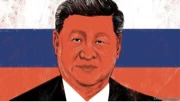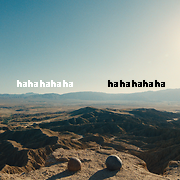|
euroshopper posted:guys is this song racist i'm having trouble deciding if it is or not If it was on the Matilda OST, no it's not racist.
|
|
|
|

|
| # ? Jun 9, 2024 22:15 |
|
Do you remember when cultural appropriation was intensely scrutinized in Western discourse? Adopting elements from diverse cultures, especially by cisgender, heterosexual, white-passing individuals, was labeled aggressive. Debates raged around braided hair, hoop earrings, and hummus, critiqued through an anti-colonialist lens. The latest round of anti-Israel protests around the world reminds me of the striking dichotomy when it comes to what is appropriate to appropriate. On one side of the coin, cultural appropriation is decried as an aggressive perpetuation of colonialism. Conversely, certain social movements, self-identifying as champions of resistance, engage in cultural appropriation seemingly without reservation or complete knowledge of the issues in which they stake a claim. The inconsistencies in what is deemed “legitimate” or “proportional” are amplified in the context of the Israel-Palestinian conflict. Still, before we dive into that, I’d like to surface a few examples of historical instances where movements embraced the perceived underdog symbols or figures without a comprehensive understanding of the implications. Take the mid-to-late 20th century, for instance, when the iconic image of Che Guevara became synonymous with several rebellions and resistance movements. The iconic portrait of Guevara may have peaked in the 90s. However, there are still thousands of items for sale on Amazon and other retail websites emblazoned with the bereted, bearded patron saint of rebellion. Despite his revolutionary status, I wonder how many of those who proudly wear Guevara on their shirts are acutely aware of the fact that Che Guevara was not only notoriously racist and homophobic, he was responsible for numerous extra-judicial deaths and sent homosexuals to labor camps. The appropriation of his image should raise questions, and we should seek to understand why cancel culture glossed over his contributions to human rights atrocities. Jump ahead to the early 2000s, and we see two additional examples of the trendy adoption of a cause without a nuanced understanding of its consequences. The impassioned calls for a “free Tibet” emphasize the disconnect between the perceived morality of a movement and its real-world impact. What Western Liberals seem to overlook, despite their good intentions, is the complexities of a “free” Tibet, where the people might have exchanged Chinese government subjugation for feudal serfdom under a god-king. Predicting these events is not my area of expertise and warrants further conversation. Nonetheless, it highlights the potential risks of championing a cause without recognizing the complexities and possible negative consequences faced by those outside the comforts of a liberal Western society. Similarly, in the early 2000s, there were widespread calls to release Myanmar’s Aung San Suu Kyi from house arrest. Kyi, a political prisoner and Nobel Peace Prize Laureate, ironically ended up defending the very people who had once imprisoned her when she represented the Myanmar military’s defense against allegations of genocide against the Rohingya Muslims at the International Court of Justice. Kyi has fallen from grace in the eyes of the Western world and is currently a political prisoner of the Myanmar military once again. These occurrences emphasize the complexity surrounding collective bandwagoning without knowledge or context. Having learned from the social justice warriors of the 2010s, the activists of the TikTok era display a noticeable lack of nuance and a tendency to form opinions without thoroughly scrutinizing a situation. This highlights the fallibility of the masses and emphasizes that endorsing or appropriating an “underdog” cause doesn’t automatically validate its ethical or moral soundness. Instead, it underscores that righteousness is subject to reassessment in light of new information or evolving circumstances, signifying true enlightenment. The selective nature of cultural appropriation is a pertinent issue, where certain movements and figures are embraced despite controversial histories or current behaviors. This raises essential questions about the sincerity of concerns for cultural integrity and ethical considerations within these movements. True virtue lies in the ability to admit when one was wrong about a position taken, learn from the pitfalls encountered, and ensure a more discerning and educated approach in choosing sides, if appropriate. Now, let’s return to the issue of cultural appropriation and the dichotomy we see in the current war that Hamas and Iran are waging against Jews. There is a pattern of selective oversight and a troubling double standard when it comes to the Jews, both in terms of respect for our ethnicity and culture and in terms of appropriating other cultures to propagate Jew hatred. Cultivation theory suggests that the media, especially TV, shapes our perceptions. In Hollywood, the representation of Jewish culture often lacks genuine respect and sensitivity. Jewish roles are frequently played by non-Jewish actors, depicted as white and pigeonholed into certain socio-economic or religious stereotypes without real depth or complexity. This misrepresentation does not always provoke the same outcry as other cultural inaccuracies. For example, the casting of Gal Gadot, who has both European and Middle-Eastern roots, as Cleopatra sparked accusations of whitewashing, despite the historical Macedonian origin of Cleopatra, contrasting with the modern Egyptian ethnic profile. It seems we have a double standard at play. On the other side of this double standard, a particular segment of “progressive” and “liberal” Jew-haters have begun to sport the keffiyeh at anti-Israel protests. This traditional Middle Eastern headdress, which itself has been appropriated and is now associated with a history of terrorism and violence (see Yassir Arafat and Leila Khaled), is suddenly exempt from the previously strict rules of cultural engagement. The image of people wearing keffiyehs with their hands covered in blood conjures painful memories of the infamous image of Aziz Salha, one of those responsible for the Ramallah lynching in the year 2000. The slogan “From the river to the sea” or “min il-ṃayye la-l-ṃayye,” which carries a profoundly controversial and violent history, has been co-opted by the masses without much understanding of its geographical or political connotations. Once you know the river and sea called out and the song’s continuation in Arabic, you’d have to be a fool (or a particular South African lawyer) to dismiss it as having genocidal undertones. These activists have similarly repurposed terms like Intifada and Jihad with almost no understanding of their meaning and scant pushback from those once vigilant against cultural insensitivity. The grotesque nature of this appropriation becomes particularly evident when examining the actions of the South African delegation that brought Israel to court in the Hague. Their audacious entrance into this esteemed institution included the donning of keffiyehs and the propagation of the standard collection of Jewish blood libels. The double standard emanated a foul stench, as Tembeka Ngcukaitobi, the lawyer who defended Julius Malema’s right to sing “Kill the Boer,” paradoxically argued the case that Israeli soldiers singing “no uninvolved civilians” was “not open to neutral interpretation or after-the-fact rationalizations and reinterpretations by Israel.” This irony of this double standard may be lost on the South African delegation but should be screamingly obvious to any sane, rational human being. It’s noteworthy, though not entirely surprising, that the once-prominent discourse on cultural appropriation has receded into the background. This shift is particularly striking given recent displays of contempt towards Jews. In the minds of some, Jews seemingly lack the right to live freely in a sovereign state, free from the threats of rape, torture, mutilation, murder, and kidnapping by a terrorist organization committed to eradicating every single Jew. It’s shocking how quickly the narrative shifts from “speech is violence” to endorsing the complete eradication of a nation. How unfortunate that those with such privilege and influential positions stand on the wrong side of history and disregard their own stipulations, clinging to misguided stances and denial of recorded events, driven by pride and a refusal to acknowledge their faults. These same people who call for the de facto erasure of Israel from the map seem to be willfully ignorant of the fact that an actual genocide occurred on Western soil – a genocide so foul that in the proceeding 75 years, the global population of Jews has yet to reach the peak of 17 million preceding the Holocaust. The intricacies of cultural appropriation unveil a selectively wielded tool in public discourse, marked by pronounced inconsistencies, particularly evident in the Israel-Palestinian conflict. This paradoxical era witnesses fervent objections to cultural appropriation growing strangely muted when Jews and their history are thrust into the spotlight, revealing a disturbing truth. The imperative is clear: Removing the double standards in the context of cultural appropriation is vital to maintaining a discourse that upholds equitable standards for all. This extends beyond a mere academic or moral oversight, resonating with the darkest chapters of history – a collective amnesia akin to moments when the global community turned away from the annihilation of Jews. For some, cultural appropriation becomes not a means of preserving cultural integrity but a smokescreen for prejudice. History has shown us the perils of propaganda and the destructive narratives against Israel and Jews, and the events following October 7th echo past injustices that we cannot afford to ignore. We’ve seen the potency of false narratives and the irreparable damage they can cause when left unchecked. Stereotypical portrayals and tokenization in the media have reduced a rich heritage to caricatures, and the chants that once incited violence continue to resound unchecked and unchallenged. Addressing the double standards and hypocrisy in the cultural appropriation discourse, especially when it involves the portrayal of Jews, is of utmost importance. We must undertake several decisive actions to reshape the narrative into one rooted in truth, understanding, and respect. First, we must be vigilant and demand accountability from those who spread misleading narratives about Jews and Israel, whether driven by self-interest or for profit. These subtle prejudices and stereotypes must be immediately and unequivocally called out, and any social media platform, academic, special interest group or political entity propagating such ideas should be harshly censured. Second, we should advocate for authentic representation, calling for media across all platforms to depict Jewish culture and life in its full complexity and refuse to accept oversimplified or incorrect narratives that reduce Jewish identity to mere plot devices. Thirdly, we must confront incitement with determination, standing firm against any actions or speech that endangers the safety and dignity of Jewish communities with the same robustness as we would defend against intolerance towards any other group. This stance includes firmly denouncing the appropriation of keffiyehs and the chanting of slogans like “From the River to the Sea” by individuals disconnected from the culture and conflict. Last, we must work to eradicate entrenched biases, challenging the outdated stereotypes that portray Jews as a homogenous group of privileged power holders. These narratives should be subjected to the same critical scrutiny and condemnation that protect the rights of other minority groups. Through these steps, we can protect our heritage and ensure our collective voice is heard clearly and accurately, reflecting the rich tapestry of Jewish history and identity. This pivotal juncture draws parallels to the crossroads faced by our ancestors in the 19th and 20th centuries. We can either acquiesce to the incessant dehumanization and external definitions of our identity, values, and rights or assertively affirm our collective voice, ensuring it resonates beyond a murmur in the tumult of societal discourse to echo as a beacon of equity and veracity. We may be vastly outnumbered, but we should all be committed to standing up for the truth, dispelling ignorance, transcending mere tokenism, and honouring the rich mosaic of the Jewish experience. We must protect our legacy and ensure our narrative – one of resilience, innovation, and significant contributions to humanity – is recounted with the respect it deserves. We must shield our children from a future fraught with the dangers of bigotry, born simply from their heritage, and we must vehemently reject any misrepresentation that seeks to whitewash our story or usurp our right to self-determination. Educating ourselves and preparing our children for a hostile world could not be more pressing. It may be the only path to peace. History has repeatedly demonstrated that when those who harbor hatred towards Jews act without consequence and when those who are well-intentioned remain silent, the path to atrocity is tragically short. Procrastination and deliberation are luxuries we simply do not have.
|
|
|
|
Knight posted:I get what you're saying but also think it's extremely funny to imagine the Mad Max movies are just Australia and the rest of the world is fine this is what im saying! its funny!!
|
|
|
|
no fun allowed in the pop culture thread this is where we talk about the muggle supremacy theory of harry potter with strong contempt because it completely undermines that storys extremely good socialist theme of how the best way to defeat fascists is by rules lawyering
|
|
|
|
sorry im just too media illiterate, too basic a bitch
|
|
|
|
Some Guy TT posted:no fun allowed in the pop culture thread this is where we talk about the muggle supremacy theory of harry potter with strong contempt because it completely undermines that storys extremely good socialist theme of how the best way to defeat fascists is by rules lawyering Some Guy TT posted:Do you remember when cultural appropriation was intensely scrutinized in Western discourse? Adopting elements from diverse cultures, especially by cisgender, heterosexual, white-passing individuals, was labeled aggressive. Debates raged around braided hair, hoop earrings, and hummus, critiqued through an anti-colonialist lens. The latest round of anti-Israel protests around the world reminds me of the striking dichotomy when it comes to what is appropriate to appropriate. mods i want someguy to prove he's not AI ty
|
|
|
|
ok shogun seems good.
|
|
|
|
Some Guy TT posted:no fun allowed in the pop culture thread this is where we talk about the muggle supremacy theory of harry potter with strong contempt because it completely undermines that storys extremely good socialist theme of how the best way to defeat fascists is by rules lawyering Harry Potter is as much to blame for liberals as West Wing
|
|
|
|
loquacius posted:Harry Potter is as much to blame for liberals as West Wing i disagree that media feeding on liberal sentiments is responsible for that liberalism in the first place
|
|
|
|
 state of the union redirect topic state of the union redirect topic  rip akira toriyama gently caress, poo poo
|
|
|
|

|
|
|
|

|
|
|
|
RIP akira toriyama What a loss
|
|
|
|
The world lost a legend today. RIP Akira
|
|
|
|
|
|
|
|
my man basically set my 90s art aesthetic. what a master
|
|
|
|
I spent a lot of time drawing Dragonball Z fighters as a kid, RIP King
|
|
|
|
Latin America as a whole has to set a regional holiday for the man Goddamn, dude
|
|
|
|
McCloud posted:The world lost a legend today.
|
|
|
|
drat, time to start my yearly play of CT early
|
|
|
|
The man was a loving all time visionary. Even if you didn't like his work his style was entirely unique and ubiquitous at the same time
|
|
|
|
|
https://x.com/Leleo2211/status/1765944111251837014?s=20
|
|
|
|
Professor Beetus posted:drat, time to start my yearly play of CT early i keep wanting to do a challenge run but i can't get past the dual-golem boss without chrono-marle-ayla
|
|
|
|
Good Soldier Svejk posted:The man was a loving all time visionary. Even if you didn't like his work his style was entirely unique and ubiquitous at the same time
|
|
|
Good Soldier Svejk posted:The man was a loving all time visionary. Even if you didn't like his work his style was entirely unique and ubiquitous at the same time I totally agree with that. His art style never really clicked with me, but he absolutely was unique and talented.
|
|
|
|
|
i say swears online posted:i keep wanting to do a challenge run but i can't get past the dual-golem boss without chrono-marle-ayla the golems counters to lucca are just as weak as they are to marle tho
|
|
|
|
did anyone else insist on renaming marle as nadia and frog as glenn and robo as r66-7 come to think of it was it me that liked doing that or my brother (at the time) who turned out to be trans
|
|
|
|
Some Guy TT posted:the golems counters to lucca are just as weak as they are to marle tho gently caress lucca. even in toryiama's death i will not let this pass
|
|
|
|
Some Guy TT posted:did anyone else insist on renaming marle as nadia and frog as glenn and robo as r66-7 their slave names? quote:come to think of it was it me that liked doing that or my brother (at the time) who turned out to be trans
|
|
|
|
Some Guy TT posted:did anyone else insist on renaming marle as nadia and frog as glenn and robo as r66-7 I did this yeah- i say swears online posted:their slave names? quote:oh no
|
|
|
|
RIP
|
|
|
|
Some Guy TT posted:did anyone else insist on renaming marle as nadia and frog as glenn and robo as r66-7 Renaming Red XIII Nanaki so when you visit Cosmo Canyon Cloud says with genuine surprise, "Nanaki's name is Nanaki?"
|
|
|
|
he probably has people in just about every place humans live on this planet mourning him. he invented Goku. a life well lived.
|
|
|
|
|
Kit Walker posted:Renaming Red XIII Nanaki so when you visit Cosmo Canyon Cloud says with genuine surprise, "Nanaki's name is Nanaki?" If you wanna have some real fun with ff7 you rename cloud to zack
|
|
|
|
Aglet56 posted:the problem is that you need enough time to pass for civilization to totally collapse and for new factions like the NCR and the iron brotherhood and poo poo to form je1 healthcare posted:The buildings would be collapsing in one generation from a single roof leak. I once visited a theme park that closed 20 years prior and the go-kart track wasn't visible with the bushes and trees growing through the asphalt. I tried to enter the arcade where I spent my 9th birthday party and I made about 2 steps toward the MK2 machine before both of my legs went through the floor like wet cardboard and of course there was a support beam in between for my nards to land on. galagazombie posted:Complaining about the buildings remaining standing for “too long” and similar complaints is another form of media illiteracy, missing the point, and the unhealthy mindset that stories only exist as things meant to be intellectually “defeated” to prove how cool you are. Fallout radiation is very explicitly 50’s B-movie radiation and the Nuclear Apocalypse runs on 50’s B-movie rules. Besides for you sticklers it’s true in-universe that the East Coast got hit way harder than the West, hence easily explaining why the East Coast is still in Mad Max mode while the West Coast isn’t even post-apocalyptic anymore.
|
|
|
|
Xaris posted:most of the time it is This is exactly how it's worked for years, constantly baiting out absurdly pathetic enemies that they wish or imagine to exist and acting like they do to get clout and clicks
|
|
|
|
i say swears online posted:i keep wanting to do a challenge run but i can't get past the dual-golem boss without chrono-marle-ayla sleep works on them
|
|
|
|
I need to get a BAD MAN shirt made. rip to the Kai.
|
|
|
|

|
|
|
|

|
| # ? Jun 9, 2024 22:15 |
|
what were akira toriyamas greatest fart jokes
|
|
|




























